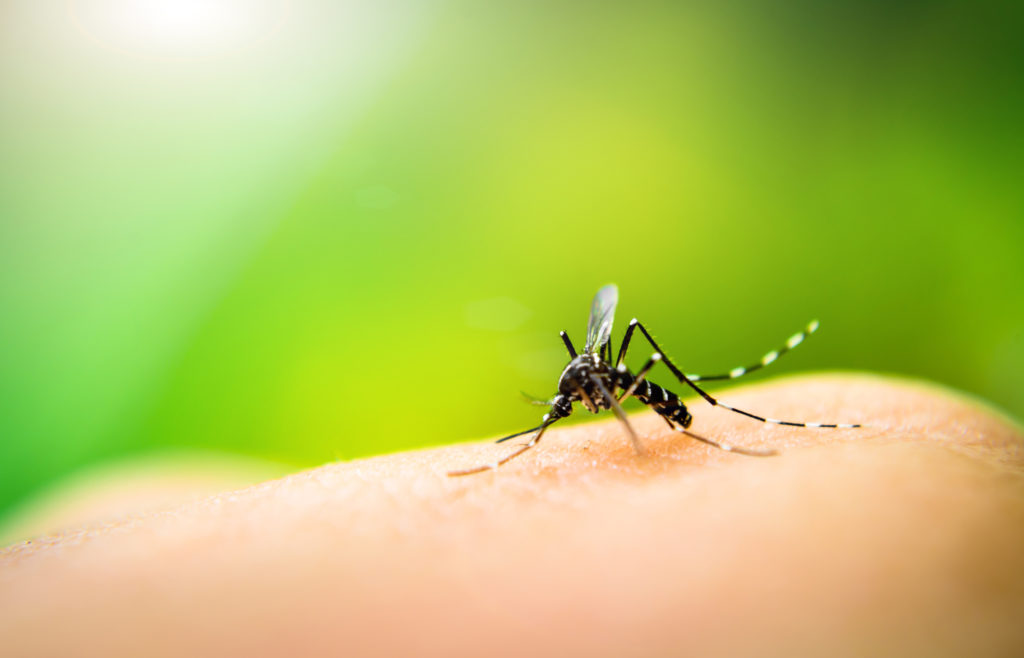Malaria Viral Infection is a disease that’s fatal and occurs due to parasites, the plasmodium parasites transmitted by infected Anopheles mosquitoes, which usually bite at night. The disease occurs mainly in the tropical regions of Africa and South-East Asia, but it can also be found in many countries, such as Mexico, Central America, South America, the Middle East, Turkey, Pakistan, India, and several Asian countries such as China. There are four types of human malaria. The two most common are Plasmodium falciparum (the most deadly) and Plasmodium vivax.
Malaria is not difficult to cure. By following proper treatment, parasites are eliminated entirely from the body of the affected person. The parasite types, P. vivax, and P. ovale include stages when the parasite can stay in the liver without causing symptoms. If they are not treated with the right treatment, the right dosage, these stages are reactivated and a relapse of the disease happens even after several months or years. The P. malaria type can also stay in the blood for decades if left untreated. In recent years, monkey malaria (Plasmodium Knowles) has been recorded in humans in some forests in South-east Asia.
Malaria Viral Infection Transmission
Anopheles mosquitoes become infected when they bite a person with malaria. The small amount of blood they take contains parasites. In the human body, parasites reach the liver and can remain dormant for several days, up to several months (depending on the parasite). When the parasites are mature, they attack the blood cells. It is at this moment that the affected people feel the symptoms of malaria. As the parasite is present in the blood cells, malaria can also be transmitted through blood transfusion, organ transplantation, or the sharing of contaminated needles. Malaria transmitted from a pregnant mother to her child before or at birth.
Malaria Diagnosis
To make sure of the presence of malaria, a diagnostic test is performed. A drop of blood analyzed under a microscope makes it possible to find the presence of the parasite. Rapid diagnostic tests, in the form of test strips, detect specific antigens produced by malaria parasites and present in the blood. These tests are usually used in the field by travelers or small organizations to quickly and efficiently assess populations affected by the disease.

Malaria Complications
- Most cases of malaria-related mortality are due to the complications of the disease; estimated that 90% of malaria deaths occur in children under 5 years of age.
- Brain damage (cerebral malaria): when blood cells infected with the parasite reach the brain, causing delirium, loss of consciousness, coma, or death.
- Pulmonary edema: an accumulation of fluid in the lungs that can cause severe respiratory problems
- Insufficiency of organs such as kidneys or liver, or rupture of the spleen that can cause death
- Severe anemia caused by the destruction of infected red blood cells
- Falling sugar in the blood: due to some severe forms of the disease that can cause coma or death
- The recurrence of episodes: certain strains of the malaria parasite, which usually cause less severe forms of the disease, can persist in the body for years and cause relapses.
Malaria Symptoms
Symptoms occur between 10 and 15 days after the infection of the infected insect. Some types of malaria parasites (Plasmodium vivax and Plasmodium ovale) may remain inactive in the liver for weeks or even months before the first signs appear.
Malaria is characterized by recurring attacks involving three phases:
- Chills
- Headaches
- Tiredness and muscle pain
- Nausea and vomiting
- Diarrhea (occasionally).
An hour or two later:
- Strong fevers
- The skin becomes hot and dry
Then, the body temperature drops:
- Abundant sweat
- Tiredness and weakness
- The affected person falls asleep
P. vivax and P. ovale malaria infections may have relapsed a few weeks or even months after the first infection even if the patient has left the area of infection. These new episodes are due to “dormant” liver forms.
People at Risk
- Travelers, children or adults from countries where malaria is not present and therefore have not developed immunity
- Residents of areas where malaria is present often, exposed to the disease, thus acquiring partial immunity, which may alleviate the severity of the symptoms. However, this immunity may disappear by moving to a country where the parasite is absent
- Pregnant women and their unborn child
- People living with HIV/AIDS
- People who undergo blood transfusion (rarely)
Risk factors
Living or visiting the tropical regions where malaria is common and where the present strains cause the most deaths, such as:
- African countries south of the Sahara desert
- The countries of the Indian subcontinent
- The Solomon Islands, Papua New Guinea, and Haiti
Malaria Infection Prevention
If left untreated within 24 hours, Plasmodium falciparum malaria can present severe and often fatal complications. Malaria is a preventable disease that’s cured. Unimmunized travelers from areas free of malaria are very vulnerable to the disease when infected
Basic Preventive Measures
- If you plan to travel to an area where malaria is present, medicines are consumed a few days or weeks before, during, and after your trip. They protect against parasites of malaria.
- Reduce exposure to mosquitoes
- The use of insect repellents (those containing DEET 20% to 35% or Picaridin 20%) are most effective for spraying house walls, clothing or skin
- Sleeping under a mosquito net impregnated or not with insecticide (permethrin)
- Cover the skin with long pants and sleeves after sunset
- Avoid going out from sunset till dawn.
Measures to prevent aggravation
If the symptoms of the disease are felt after traveling to a country affected by malaria, it is better to carry out a diagnostic test without delay, as the consequences of the disease can be fatal.




